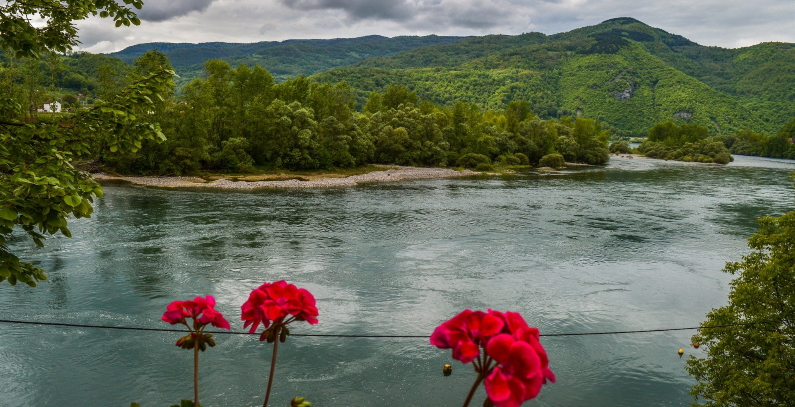
Photo: Pixabay
A study by UNECE on linkages between renewable energy and nature and food production was created alongside mechanisms for political leaders, companies and representatives of affected communities to address issues and come up with mutually beneficial plans. UNECE said stakeholders can come up with win-win options in the renewables-water-food-ecosystems nexus through dialogue.
Experience and research show how joint efforts by decision makers and private developers in different industries and neighbouring states can produce the highest possible benefits from green energy projects and maintain sustainability at the same time, the United Nations Economic Commission for Europe, said in a new publication. UNECE’s report provides insight into comprehensive intersectoral or nexus approach to make the best of available renewables while addressing related issues that affect water supply, ecosystems and food production.
The main authors – Vassilis Triantafyllos and Lucia de Strasser – said coordination in planning and deployment of renewable energy systems alongside diversification enable higher capacity and complementarity of available sources. They worked under the guidance of Gianluca Sambucini and Annukka Lipponen from UNECE.
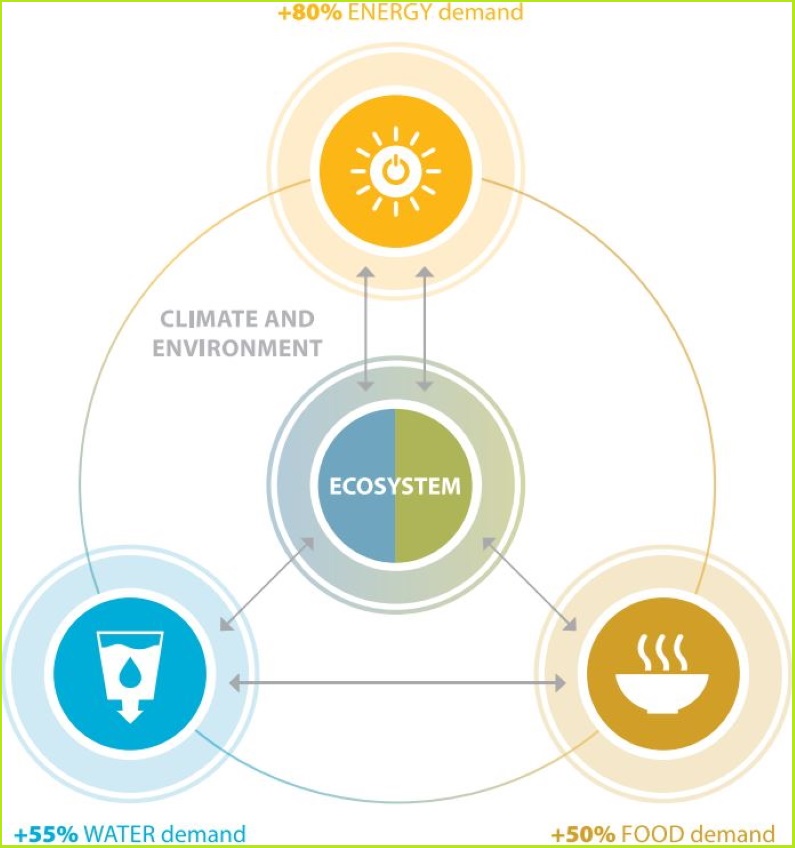
The study is called ‘Towards sustainable renewable energy investment and deployment: Trade-offs and opportunities with water resources and the environment’. It is the result of multi stakeholders Hard Talk events in Bosnia and Herzegovina and Serbia and the Drina Nexus Assessments project implemented from 2016 to 2019 in the Western Balkans under the Convention on the Protection and Use of Transboundary Watercourses and International Lakes.
Report offers mechanisms for understanding connections
Strategic planning, policy design and projects are three parallel tracks in the process. Renewables, ecosystems, water and food comprise a nexus or an interlinked system and the document points to mechanisms for understanding the connections and getting the best on all fronts out of possible activities.
The toolkit offers a way to gradually maximize the benefits that come with renewables as projects are planned and developed and to lower the negative impact on ecosystems and people in the area.
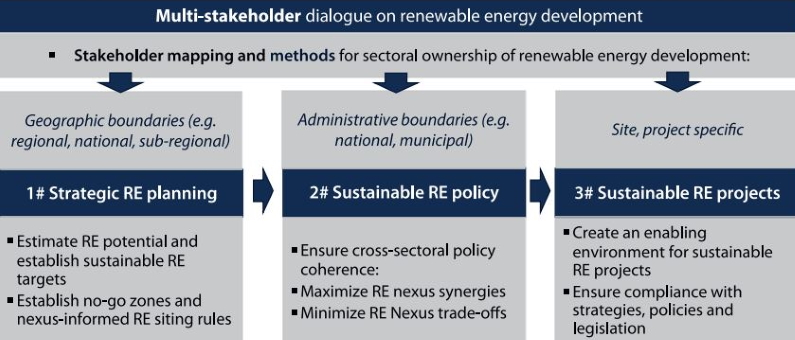
For instance, in cases where sustainable management of natural land and water resources is imperiled by the construction of a hydropower plant, we are considering trade-offs or how the two are hampering each other’s progress. Conversely, identifying ways for a common benefit gives us the opportunity for synergies or a win-win situation.
Transboundary factor
Some of the damaging effects may extend to a neighboring country, which is why cross-border communication is especially relevant for the method. Similarly, integration between sectors and the public and private sphere opens the way for cofinancing and partnership.

The said tools help upscale renewable energy while reinforcing or at least safeguarding advancements in the water sector, agriculture and the environment. In the analysis, factors like climate change, health, employment, tourism and rural development have a significant role. The study highlights the importance of public participation which implies a seat at the table for civil society organizations as well as financial institutions.
Opportunities for mutual benefits
As there is mutual ground between energy, water and food, positive changes in one area could negatively affect the remaining two. However, there are other combinations like some good and other neutral outcomes, without damage. The publication was produced to help those involved prevent poor planning, which UNECE says may harm health or justice.
In the cross section between energy and water, floating solar power facilities on artificial reservoirs were highlighted as a win-win situation as the technology helps the performance at existing infrastructure. In other cases, renewables can provide low-energy intensity solutions for increased access to water including desalination and irrigation.
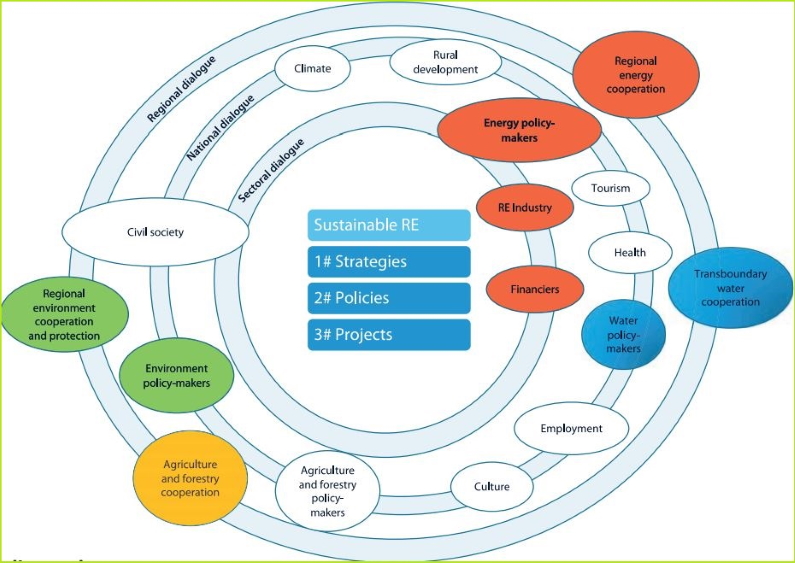
In the energy-agriculture relation, land use is one of the biggest issues. Some energy crops deplete the soil of nutrients or require lots of water, for example, and they may decrease the available space for food production. On the flipside, there are cases where farmers grow plants or place beehives under ground-mounted solar panels.
There are cases where farmers grow plants or place beehives under ground-mounted solar panels, which is a win-win scenario
Small hydropower can have a substantial cumulative impact on the environment against a questionable ability to contribute to meeting energy needs. Biomass comes with a risk of forest degradation and flooding.
Synergies against trade-offs
The so-called Sustainability Assessment Matrix is one of the tools for addressing the challenges and avoiding net social loss. It helps stakeholders determine linkages between a proposed renewable energy solution and nexus-relevant areas (water, food, ecosystems), and allows for the examination of potential transboundary dimensions, according to the study.
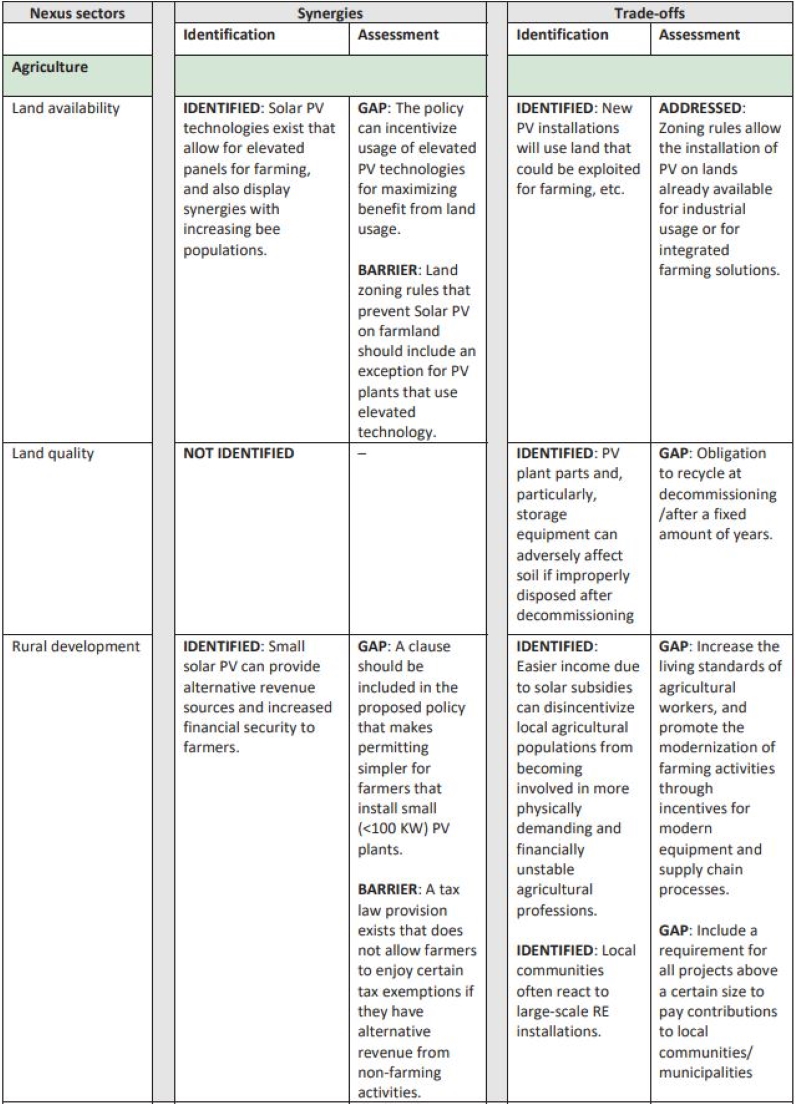
Governments mostly stimulate the rise in renewable energy’s share in the mix and investment has the potential to positively impact the other nexus sectors. But policies and projects that are envisioned with the idea to exploit synergies are rare, the authors warned. At the strategic planning level, they praised the European Green Deal for its “cohesive and systemic” approach.
Planning activities need to involve nongovernmental organizations but also financial institutions
“In the case of renewable energy, projects are most commonly identified and proposed by private developers or utilities, and not as a result of systematic renewable energy planning. The need for a more comprehensive approach is evident. The renewable energy decision-making process should integrate the assessment of nexus considerations at every relevant step,” the report reads and adds the first step is to assess which stakeholders need to participate in strategic renewable energy planning and to involve them.









Be the first one to comment on this article.